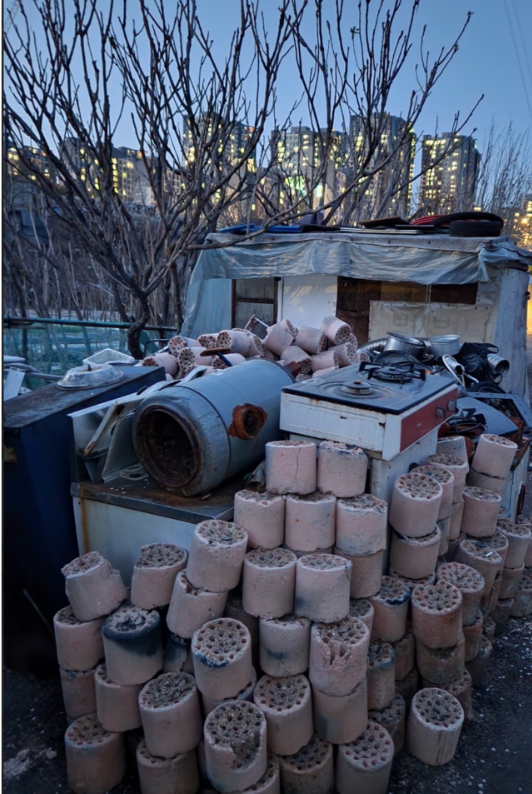The ‘Invisible’ Village
- Amy Nam
- Feb 14, 2024
- 3 min read
Between my recollections of summer 2014 and autumn 2016, en route to the lesson in preparation for the art school, the ironic co-existence of two incongruent settlement types unfolds along each side of the six-lane road: to the right, the “Tower Palace” apartment complex, symbolizing the utmost privilege in 2010s Seoul, South Korea; to the left, Guyrong Slum Village (GSV), one of the city’s last informal settlements, frozen in 1960s poverty. What could be unexpected is that the GSV residents were once inhabitants of the land now occupied by Tower Palace but were compelled to relocate beneath the Guyrong mountain during a wave of speculative urbanism.
Around 4 pm, on my way to the lesson, GSV is nearly imperceptible, overshadowed by the height of the adjacent apartment complex. However, on my way back from the night lesson, the village becomes ‘invisible’, devoured by the darkness: a stark contrast to the illuminated Tower Palace, where you can count the number of square grid windows from a distance. At that time, little did I realize that our indifference and cognitive detachment from this symbolic poverty site hindered our acknowledgment of the symbiotic relationship between the larger urban community and GSV. Perhaps rather than GSV, vested interests’ intentional neglect of inequality may be more responsible for Seoul’s visual and political discord.

It was not until November of 2021 that I visited GSV – the first time I crossed the village entrance. GSV served as the inaugural field study site in my independent research initiative, aimed at scrutinizing the extent to which the village functions as a multifaceted settlement. If a settlement is considered multi-functional, it becomes a powerful reason to oppose the redevelopment plan. Hence, given the prolonged postponement of the GSV redevelopment plan and the persistent resident protests, I sought to uncover the area’s vital role as a community and economic center.

After the study, if anyone asks me to metaphorically summarize GSV succinctly, it will be Jogakbo, a traditional Korean patchwork crafted with left-over fabrics. This analogy is applicable in structural, operational, and functional aspects. Structurally, satellite image analysis (for planning a transect line where primary data and information would be collected) revealed narrow backstreet networks and irregular rectangular roofs of the individual dwellings resembling the pieces of fabric stitched together organically.

Operationally, the village mirrors Jogakbo’s interdependent nature, with individual households forming a cohesive ensemble. While interviewing the inhabitants of the village, one prominent characteristic I noticed was that a large proportion of economic and social activities rely on an interdependent network between residents. For instance, due to the unaffordability of food outside the slum villages, the owner of the corner shop inside the village purchases large quantities of instant ramen and related goods at a low price and sells them to the inhabitants at affordable prices. According to the owners of small restaurants whose primary customers are tourists of Mt. Guyrong, they source their ingredients from the local corner shops and community gardens. In return, they are responsible for providing the venue and food during community social events.
Functionally aligned with reusing and recycling processes involved in creating Jogakbo, the village’s primary economic role revolves around participation in the urban circular economy. The three main recycling centers in the village are significant not only because of their large size (which is rare in Seoul due to costly land prices) but also due to the high level of low-income and informal workers’ dependency on the site to earn cash — a mode to afford daily food and necessities.
Regrettably, after heavy rainfall in late July 2023, 60% of residents permanently departed. Additionally, an average resident age of mid-80s is projecting challenges in the natural maintenance of the village. Hence, within a few decades, GSV might actually turn ‘invisible.’ While it can be argued that the vanishing of slums aligns with typical development trajectories, I sincerely hope for a recognized acknowledgment of GSV’s vibrant and symbiotic relationship with Gangnam’s urban area and that its impending invisibility was not solely a natural occurrence but, rather, a consequence of our collective indifference towards urban spatial injustice and inequality.


Comments